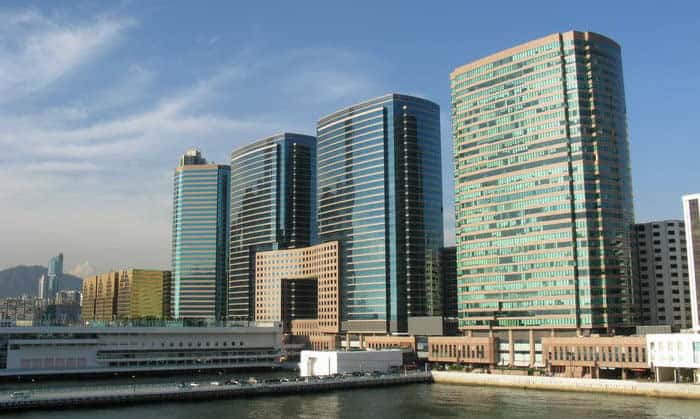
WeWork walked away from a six-storey centre at Harbour City
WeWork has surrendered three lease commitments in Hong Kong as the US co-working giant continues to restructure its portfolio, according to a person with knowledge of the matter who spoke to Mingtiandi.
Mingtiandi understands that WeWork has surrendered its centre in Wharf’s Harbour City complex in Tsim Sha Tsui, which failed to open in the last quarter of 2019, and has handed back its facility in the Harbourside HQ in Ngau Tau Kok after renovations on both locations had been mostly completed. The company has also failed to open a third previously announced location at Hysan Place in Causeway Bay.
The pullback by WeWork comes as social distancing measures to stop the spread of COVID-19 have emptied co-working spaces in the Asian financial hub, forcing co-working operators in the city to further pare their portfolios.
Shelving Plans Before Moving In
In the once-bustling Tsim Sha Tsui retail hub, WeWork has abandoned its 150,000 square foot space at Gateway Tower 6 in Harbour City after leasing the grade A property last year at a reported HK$60 per square foot per month. The six-floor office is only a ten-minute ferry ride across Victoria Harbour from the Central pier.

Jonathan Wright, director of flexible workspace services for Asia at Colliers International
“The challenge with the locations WeWork have handed back is that the market has moved since these leases were committed to and therefore any incoming tenant, whether flexible workspace operator or not, will be looking at a discount to the rents WeWork were paying,” said Jonathan Wright, director of flexible workspace services for Asia at Colliers International.
In Kowloon Bay, the company is also said to have walked away from a largely completed facility in CSI’s Harbourside HQ, which was known until recently as the Octa Tower.
WeWork is said to have leased the 47,600 square feet space near the Ngau Tau Kok MTR station for the equivalent of HK$25 per square foot per month, and had earlier announced that the co-working hub would commence operations in the fourth quarter of 2019.
The Kowloon location of these two centres may have helped make them expendable, one analyst indicated.
“Given the bleak outlook of the coworking market right now, co-working firms like WeWork have to minimise their costs, and are likely to opt out of offices in Kowloon first due to the abundance of supply in the sub-market compared to the Greater Central area,” said Vincent Cheung, managing director of Vincorn Consulting and Appraisal.
Both locations have been listed for lease despite renovations having been completed, after WeWork opted to trim its footprint in the city, according to the media account.
In Causeway Bay, WeWork has also terminated its lease for a centre in Hysan Place, which the shared office giant had previously said it would open during the final three months of 2019.
Timing the Market
During October, WeWork had announced plans to open four new Hong Kong locations by the end of 2019, including centres at The Quayside in Kwun Tong and at Henderson Land’s H Code on Pottinger Street in Central, in addition to the aborted locations in Tsim Sha Tsui, Kowloon Bay and Causeway Bay. Since that time, the H Code and The Quayside centres have opened successfully.
From March through August last year WeWork had signed five new leases representing 425,000 square feet of office space. Since that time, in addition to abandoning the three locations now on the market, in November the firm surrendered half of a 60,000 square foot space it had agreed to occupy in the Hopewell Centre in Wanchai.
WeWork’s woes come as the vacancy rate for grade A office space in Central rose to 4.6 per cent in the first quarter of 2020, up from 3.8 percent from the previous three months, according to a report released in April by property agency Savills. Citywide, vacancy rates have risen from 2.6 percent in March 2019 to 5.2 percent in March 2020, the agency found.
DIY Co-Working
With office demand wavering, operators such as WeWork are finding that committing to long term leases carries significant downsides, with landlord support becoming critical to establishing successfully flexible office locations.
“What flexible workspace locations on leases being handed back to landlords highlights is that leases are not a lower risk way of bringing a flexible workspace operator into an asset and we expect partnerships and management agreements to become more common,” Colliers’ Wright said.
Among the Hong Kong locations that WeWork has been able to open over the last six months, the company’s centre at the Quayside was established through a joint venture with the building’s developer, a joint venture between Link REIT and private local builder Nan Fung.
In some instances, landlords have decided to go solo as troubled flexible office operators walk away from deals.
After local co-working provider Campfire walked away from a planned nine-floor centre at the V-Point commercial building in Causeway Bay late last year, the owner of the building decided to self-operate the facility, telling a local media outlet in March that it had succeeded in leasing out 70 percent of the space.
Leave a Reply